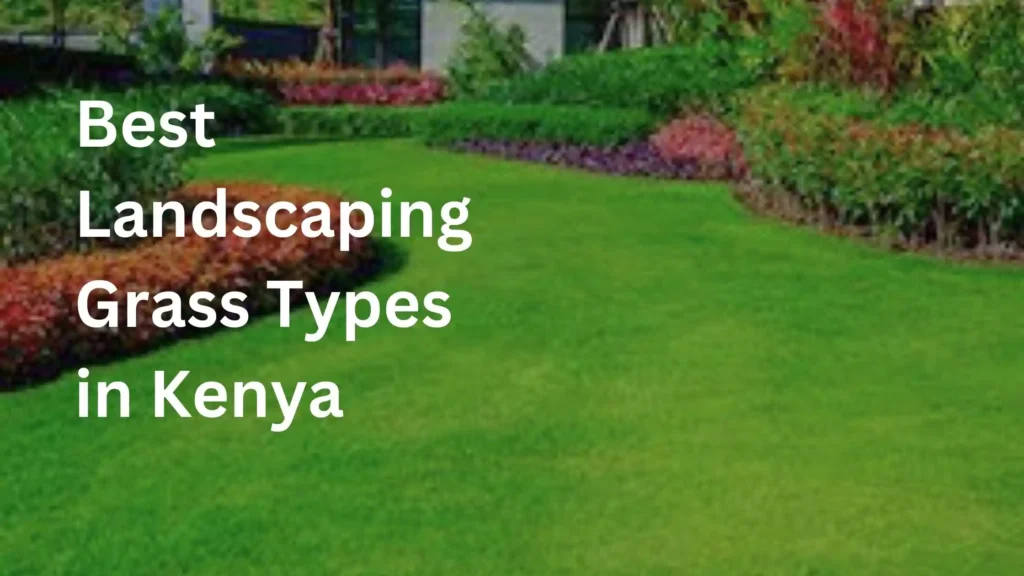Best Landscaping Grass Types in Kenya
- Introduction to Best Landscaping Grass Types in Kenya
- Understanding Grass Types in Kenya
- Popular Grass Types for Landscaping in Kenya
- Factors to Consider When Choosing Grass for Landscaping in Kenya
- Tips for Maintaining Your Lawn in Kenya
- How to Keep Your Lawn Looking Great in Kenya
- Conclusion
- Frequently Asked Questions
Introduction to Best Landscaping Grass Types in Kenya
Choosing the right grass is vital for a beautiful lawn in Kenya. The country’s climate varies from tropical coasts to dry savannas and cool highlands. This diversity offers both challenges and opportunities. A perfect lawn boosts your property’s appeal and supports environmental sustainability.
Choosing the right grass for your Kenyan yard needs careful thought. Consider the area’s temperature, rainfall, and soil. For instance, you might want a lush garden in Nairobi’s highlands. Or, perhaps a drought-resistant lawn in Mombasa. Knowing the types of grass is crucial.
This Kenya landscapers guide covers the best grasses for landscaping in Kenya. It considers the country’s diverse climates and lawn care needs. Select the right grass for your area and purpose. You will then have a beautiful, hardy lawn that thrives in Kenya’s environments.
Understanding Grass Types in Kenya
Choosing grass for your Kenyan yard? First, know the difference between warm-season and cool-season grasses. This is crucial. Kenya’s varied landscape and climate make it important.
Warm-season grasses
These grasses are perfect for Kenya’s hot regions, like the coast and lowlands. They thrive at 25°C to 35°C, ideal for Mombasa, Malindi, and the Rift Valley. Examples include Kikuyu and Bermuda grass. Both are heat-tolerant, drought-resistant, and can endure intense sunlight.
Cool-season grasses
Cool-season grasses thrive in Kenya’s cooler highlands, like Nairobi, Kisumu, and the Central Highlands. These areas, with moderate temperatures and higher altitudes, are ideal for such grasses. Common types include Ryegrass and Fescue. They prefer temperatures between 15°C and 24°C and can tolerate occasional frost, typical in the coldest months.
Kenya’s diverse altitudes affect the choice of grass types. For instance, the coastal lowlands differ from the central highlands in temperature. This variation allows different grasses to thrive. Thus, landscapers in Kenya can pick grasses suited to their specific climates.
Popular Grass Types for Landscaping in Kenya
1. Kikuyu Grass
Thrives on the diverse climate of Kenya, East Africa It thrives in sunny locations and is drought-tolerant. Which makes it great for many areas. Providing a thick, fluffy lawn that withstands heavy foot traffic Therefore, it is best for houses as well as public places. It will spread rapidly and must be cut on occasion but is not a high-maintenance variety. What is more, it has good resistance to most pests and diseases found in Kenya.
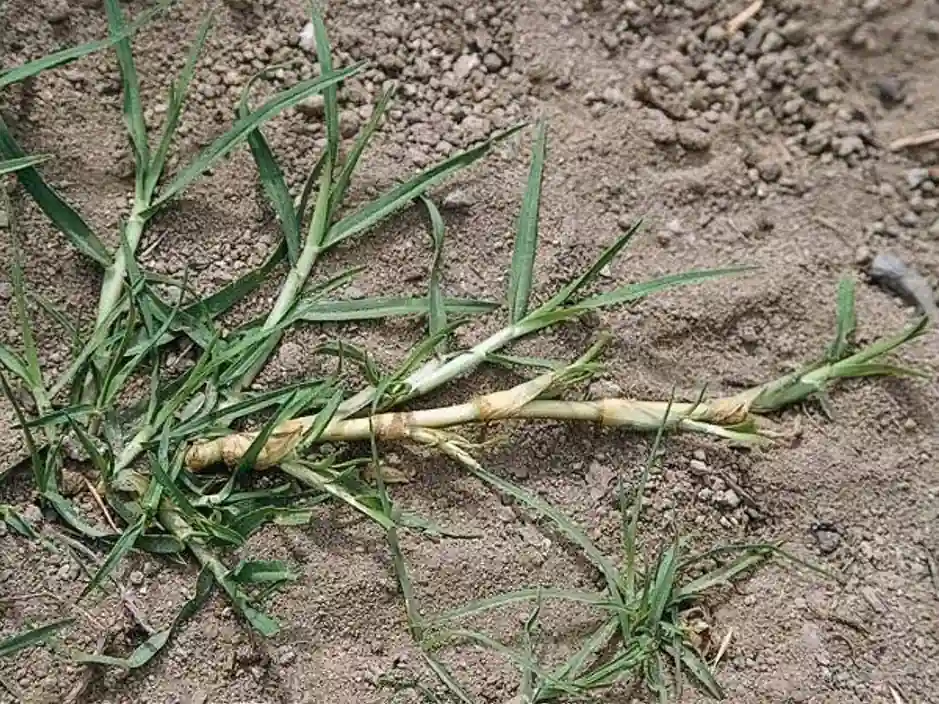
2. Bermuda Grass
Another kind of grass which does well in warm coastal areas is bermuda — it’s very common to find this tended lawn in Kenyan towns at the coast. As a drought and heat tolerant plant, this makes sure that it fits well in the sunny dry regions. Grass produces a thick lawn that rapidly recovers from hard wear. This is extremely drought-tolerant, but rampant in its growth. So, without regular trimming this can also spread into gardens or even to neighbours’ properties.
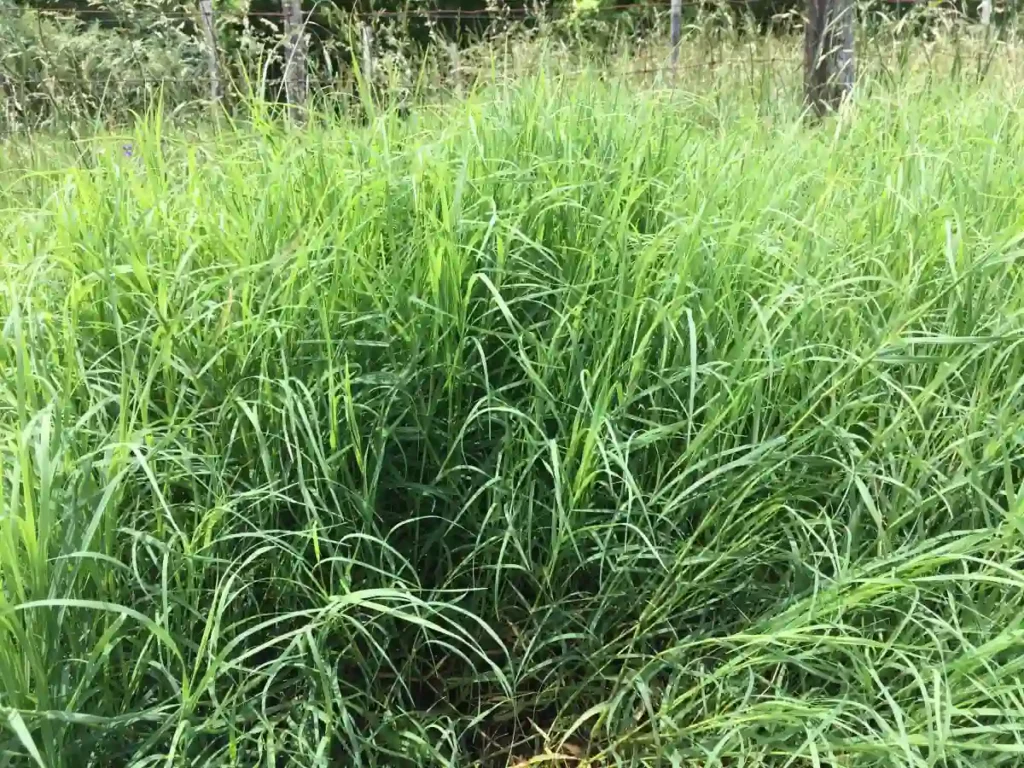
3. Ryegrass
Ideal for cool highland regions like Nairobi, ryegrass So it gives you a beautiful natural grass lawn with pretty little maintenance. Rapid growth rate with a fine texture that accents landscapes. Although they do well in the highlands, cabbages must be watered consistently as we witnessed when after a long rain drought several heads fell off. It is common in upmarket houses and golf courses of the cold parts of Kenya.
4. Fescue Grass
Fescue grass is a good choice for the shaded, cooler areas of Kenya. Versatile, as it is drought and shade tolerant It will also tolerant to shade and the grass does not enter a dormant period, remaining green throughout the year or adapting an alternate set of growth habits that require less care than other cool-season grasses. Go great in apartments with shady yards or even under trees in Nairobi or the Central Highlands.
5. Buffalo Grass
Buffalo grass is light green and tolerates drought and shade well. This makes it ideal for homes and offices in hot, shaded areas. It doesn’t tolerate cold well but outcompetes weeds effectively. Thus, it needs mowing infrequently.
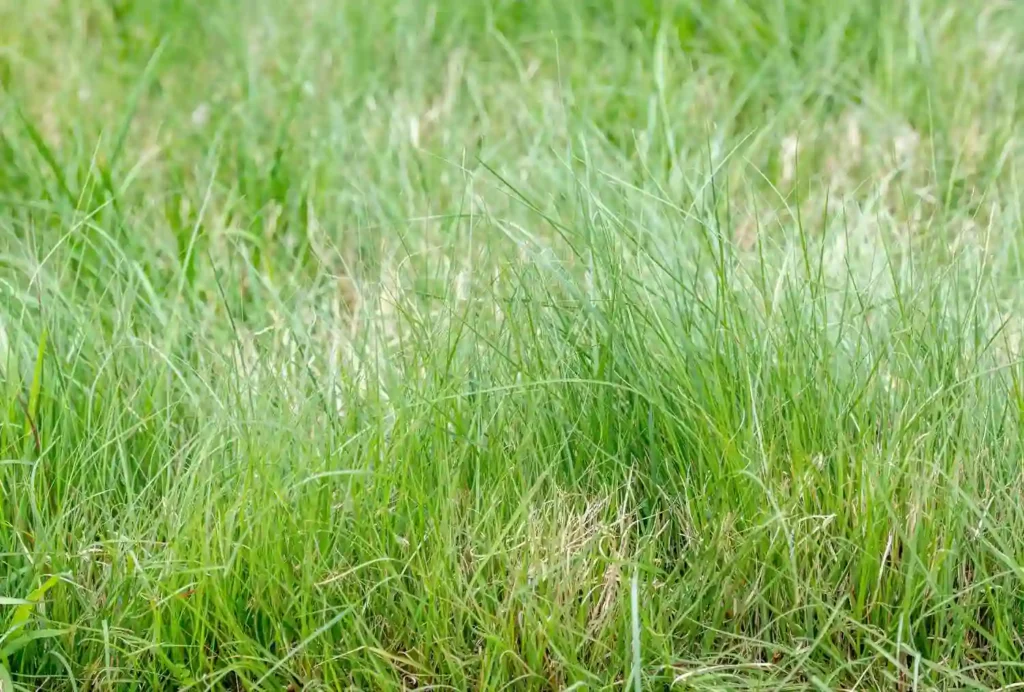
6. Carpet Grass
This grass is low, creeping, dark green, and drought-tolerant. It’s ideal for homes and offices, especially in poor soil or wet areas. Carpet grass has low tolerance for shade and cold but effectively outcompetes weeds.
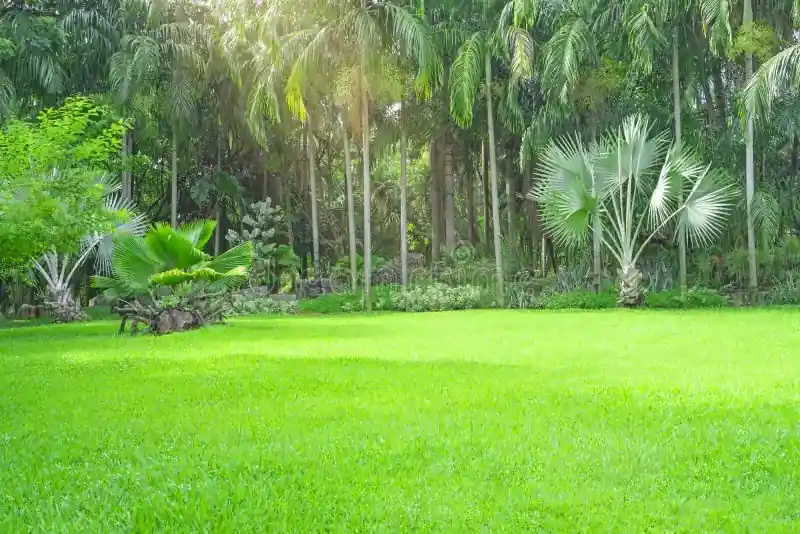
7. Zimbabwe Grass
Zimbabwe grass is a versatile choice. It tolerates moderate drought and high shade. It’s ideal for shaded homes and offices, especially at higher altitudes. It also grows well in full sun and beats weeds easily. However, it needs more frequent mowing than other types.
8. Arabic Grass
This creeping grass, with small dark green leaves, is ideal for homes and offices. It tolerates shade and cold well but struggles with drought and heat. While it beats weeds, it often turns brown or yellow. Moreover, it needs plenty of water and is hard to care for.
9. Pemba Grass
Pemba grass thrives in hot, shaded areas. It’s perfect for homes and offices there. It tolerates drought and heat well. However, it doesn’t fare well in cold. The grass outcompetes weeds and needs little mowing.
10. Maadi River
This grey-blue creeping grass is an old Kenyan variety. It withstands drought and heat well, making it ideal for homes and offices. However, it tolerates shade poorly but can handle cold moderately. Additionally, it effectively outcompetes weeds.
11. Tiff Sport Grass
This grass, with fine leaves, suits homes and sports fields. It’s drought and wear resistant, making it a versatile landscaping choice.
12. Cape Royal
Cape Royal is a greyish-blue grass that can form numerous seed heads when not mowed. It’s a creeper, making it an interesting visual choice for landscaping projects.
Each of these grass types has unique benefits for Kenyan landscapes. They cater to the country’s diverse climates and landscaping needs.
Factors to Consider When Choosing Grass for Landscaping in Kenya
- Regional Climate:
- Coastal areas: Heat-tolerant varieties (e.g., Bermuda, Carpet grass)
- Highland regions: Cool-season grasses (e.g., Zimbabwe grass, Kikuyu)
- Arid regions: Drought-resistant options (e.g., Buffalo, Pemba grass)
- Soil Type:
- Coastal areas: Often sandy soils
- Highlands: Typically loamy soils
- Choose grass compatible with local soil type
- Example: Carpet grass for poor soil conditions
- Water Availability:
- Consider drought-resistant varieties in water-scarce areas
- Suitable options: Buffalo, Pemba, Maadi River grass
- More sustainable for arid and semi-arid regions
- Lawn Use:
- High-traffic areas: Durable grasses (e.g., Sports Pitch Bermuda, Tiff Sport grass)
- Residential gardens: Versatile options (e.g., Zimbabwe grass)
Tips for Maintaining Your Lawn in Kenya
- Watering:
- Water deeply but less frequently
- Consider drip irrigation systems or rainwater harvesting
- In coastal areas, water early morning or late evening
- Mowing:
- Adjust frequency based on grass type and season
- Mow more during rainy seasons
- Avoid cutting more than one-third of grass height
- Fertilizing:
- Use organic fertilizers like compost
- Apply during growing season (rainy periods)
- Be cautious with chemical fertilizers
- Weed Control:
- Regular mowing to prevent weed growth
- Manual removal or organic herbicides for stubborn weeds
- Some grasses naturally outcompete weeds (e.g., Kikuyu, Zimbabwe grass)
- Pest Management:
- Monitor for common pests (e.g., armyworms, fungal diseases)
- Promote natural pest control
- Use eco-friendly pesticides when necessary
- Aeration and Dethatching:
- Periodically aerate to improve soil drainage and oxygen flow
- Dethatch to remove dead grass and promote healthier growth
How to Keep Your Lawn Looking Great in Kenya

1. Watering
Water watering is important, especially in arid regions. Deep and infrequent watering promotes deep root system Install drip irrigation or utilize rainwater harvesting practices. This way, it prevents evaporation at must in coastal areas when watering at night/early-morning.
2. Mowing
Mow less often if weather is cooler, or according to the correct mowing frequency for each grass type. Grasses grow pretty fast during rainy seasons. For instance, Kikuyu grass will need mowing quite a lot as it grows relatively quick compared to Buffalo that requires fewer cuts. Never cut more than one-third of the total grass height on the day you mow.
3. Fertilizing
Promote the use of organic fertilizers such as compost to improve soil fertility. The main benefit of this is land where the soils have been stripped of nutrients. Fertilize during the growing season usually when it is raining in Kenya. Use of chemical fertilizers should be done sparingly as an overuse may result in environment problems.
4. Weed Control
Utilize proper ecofriendly weed control suitable for Kenyan gardens Mowing is important because it prevents the growth of weeds. Reserve pulling plants up by the roots (called “hand weeding”) or organic products for particularly stubborn weeds. They help in the competition of weeds by outcompeting them naturally especially grass types like Kikuyu & Zimbabwe preventing to use excess amount of weed control.
5. Pest Management
It is essential your lawn be regularly checked to monitor for armyworm or fungal infections common in Kenya. Keep your garden healthy for nature to encourage natural pest controls. When called for, apply target-type Eco-Friendly sprays that are specific to what you find.
6. Aeration and Dethatching
If you have clay, your land will need to be aired more often so as not to drown on top of this soil. This is important especially for thick types such as Kikuyu grass as that allows the growth to happen.
Conclusion
Choosing the right grass is key for landscaping in Kenya. We’ve covered various grass types for Kenya’s climates. They range from coastal to highland and dry areas. It’s vital to consider soil, water, and lawn use in your selection.
Kikuyu, Bermuda, Buffalo, and Zimbabwe grasses suit different Kenyan areas. Each has unique benefits. Yet, picking the right grass is just the start. You also need to water, mow, and fertilize properly. Using organic methods for pest control is key too.
Kenyan homeowners and landscapers can create beautiful, resilient lawns. They need to choose the right grass and care routines. This not only improves property appearance but also boosts environmental sustainability. Moreover, the right choice can lower maintenance costs over time.

